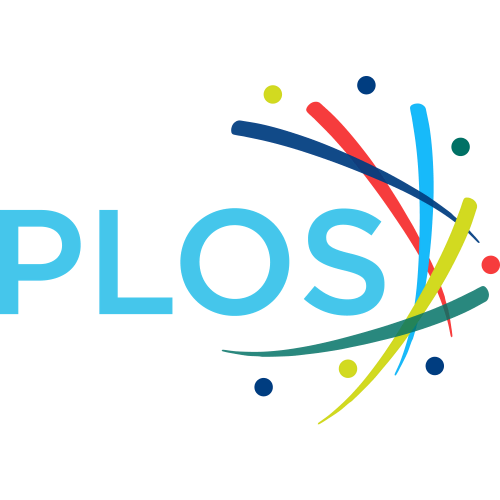Cell, volume 183, issue 2, pages 429-441.e16
High Potency of a Bivalent Human VH Domain in SARS-CoV-2 Animal Models
Wei Li
1
,
Alexandra Schäfer
2
,
Swarali S Kulkarni
3
,
Xianglei Liu
1
,
Chuan Chen
1
,
Zehua Sun
1
,
Sarah R. Leist
2
,
Aleksandra K Drelich
4
,
Li-Yong Zhang
1
,
Marcin L Ura
5
,
Alison Berezuk
6
,
Sagar Chittori
6
,
Karoline Leopold
6
,
Dhiraj Mannar
6
,
Shanti S Srivastava
6
,
Xing Zhu
6
,
Eric W. Peterson
5
,
Chien-Hao Tseng
4
,
John W. Mellors
1
,
Darryl Falzarano
3
,
Sriram Subramaniam
6
,
Ralph Baric
2
,
Dimiter S. Dimitrov
1
1
Center for Antibody Therapeutics, Division of Infectious Diseases, Department of Medicine, University of Pittsburgh Medical School, 3550 Terrace St, Pittsburgh, PA 15261, USA
|
2
Department of Epidemiology, University of North Carolina at Chapel Hill, 135 Dauer Drive, 3109 Michael Hooker Research Center, Chapel Hill, NC 27599, USA.
|
3
Vaccine and Infectious Disease Organization – International Vaccine Centre, and the Department of Veterinary Microbiology, University of Saskatchewan, 117 Veterinary Road, Saskatoon, SK S7N 5E3, Canada
|
4
Department of Microbiology and Immunology, Centers for Biodefense and Emerging Diseases, Galveston National Laboratory, 301 University Blvd., Galveston, TX 77550, USA
|
5
Abound Bio, 1401 Forbes Ave., Pittsburgh, PA 15219, USA
|
Publication type: Journal Article
Publication date: 2020-10-01
General Biochemistry, Genetics and Molecular Biology
Abstract
Summary
Novel COVID-19 therapeutics are urgently needed. We generated a phage-displayed human antibody VH domain library from which we identified a high-affinity VH binder ab8. Bivalent VH, VH-Fc ab8, bound with high avidity to membrane-associated S glycoprotein and to mutants found in patients. It potently neutralized mouse-adapted SARS-CoV-2 in wild-type mice at a dose as low as 2 mg/kg and exhibited high prophylactic and therapeutic efficacy in a hamster model of SARS-CoV-2 infection, possibly enhanced by its relatively small size. Electron microscopy combined with scanning mutagenesis identified ab8 interactions with all three S protomers and showed how ab8 neutralized the virus by directly interfering with ACE2 binding. VH-Fc ab8 did not aggregate and did not bind to 5,300 human membrane-associated proteins. The potent neutralization activity of VH-Fc ab8 combined with good developability properties and cross-reactivity to SARS-CoV-2 mutants provide a strong rationale for its evaluation as a COVID-19 therapeutic.Top-30
Citations by journals
|
1
2
3
|
|
|
Viruses
3 publications, 3%
|
|
|
Nature Communications
3 publications, 3%
|
|
|
Cell Reports
3 publications, 3%
|
|
|
mAbs
3 publications, 3%
|
|
|
Frontiers in Immunology
2 publications, 2%
|
|
|
International Journal of Molecular Sciences
2 publications, 2%
|
|
|
Scientific Reports
2 publications, 2%
|
|
|
iScience
2 publications, 2%
|
|
|
Biochemical and Biophysical Research Communications
2 publications, 2%
|
|
|
Science
2 publications, 2%
|
|
|
Cancer Letters
1 publication, 1%
|
|
|
Current Molecular Medicine
1 publication, 1%
|
|
|
Current Medicinal Chemistry
1 publication, 1%
|
|
|
Viral Immunology
1 publication, 1%
|
|
|
Biochemical Journal
1 publication, 1%
|
|
|
International Journal of Nanomedicine
1 publication, 1%
|
|
|
Critical Pathways in Cardiology
1 publication, 1%
|
|
|
Cell Biochemistry and Function
1 publication, 1%
|
|
|
Frontiers in Cellular and Infection Microbiology
1 publication, 1%
|
|
|
Pathogens
1 publication, 1%
|
|
|
Journal of Nanobiotechnology
1 publication, 1%
|
|
|
Microbial Cell Factories
1 publication, 1%
|
|
|
Cellular and Molecular Immunology
1 publication, 1%
|
|
|
Mycotoxin Research
1 publication, 1%
|
|
|
BioDrugs
1 publication, 1%
|
|
|
Cellular and Molecular Biology Letters
1 publication, 1%
|
|
|
Nature Nanotechnology
1 publication, 1%
|
|
|
Communications Biology
1 publication, 1%
|
|
|
Nature Biomedical Engineering
1 publication, 1%
|
|
|
1
2
3
|
Citations by publishers
|
5
10
15
20
25
|
|
|
Cold Spring Harbor Laboratory
21 publications, 21%
|
|
|
Elsevier
20 publications, 20%
|
|
|
Springer Nature
15 publications, 15%
|
|
|
Multidisciplinary Digital Publishing Institute (MDPI)
9 publications, 9%
|
|
|
American Chemical Society (ACS)
5 publications, 5%
|
|
|
Taylor & Francis
4 publications, 4%
|
|
|
Frontiers Media S.A.
3 publications, 3%
|
|
|
Wiley
3 publications, 3%
|
|
|
American Association for the Advancement of Science (AAAS)
3 publications, 3%
|
|
|
Bentham Science
2 publications, 2%
|
|
|
Public Library of Science (PLoS)
2 publications, 2%
|
|
|
American Society for Microbiology
2 publications, 2%
|
|
|
Mary Ann Liebert
1 publication, 1%
|
|
|
Portland Press
1 publication, 1%
|
|
|
Dove Medical Press
1 publication, 1%
|
|
|
Wolters Kluwer Health
1 publication, 1%
|
|
|
Oxford University Press
1 publication, 1%
|
|
|
American Association for Cancer Research (AACR)
1 publication, 1%
|
|
|
Proceedings of the National Academy of Sciences (PNAS)
1 publication, 1%
|
|
|
Rockefeller University Press
1 publication, 1%
|
|
|
Emerald
1 publication, 1%
|
|
|
Autonomous Non-profit Organization Editorial Board of the journal Uspekhi Khimii
1 publication, 1%
|
|
|
5
10
15
20
25
|
- We do not take into account publications without a DOI.
- Statistics recalculated only for publications connected to researchers, organizations and labs registered on the platform.
- Statistics recalculated weekly.
{"yearsCitations":{"type":"bar","data":{"show":true,"labels":[2020,2021,2022,2023,2024],"ids":[0,0,0,0,0],"codes":[0,0,0,0,0],"imageUrls":["","","","",""],"datasets":[{"label":"Citations number","data":[12,51,24,9,4],"backgroundColor":["#3B82F6","#3B82F6","#3B82F6","#3B82F6","#3B82F6"],"percentage":["12","51","24","9","4"],"barThickness":null}]},"options":{"indexAxis":"x","maintainAspectRatio":true,"scales":{"y":{"ticks":{"precision":0,"autoSkip":false,"font":{"family":"Montserrat"},"color":"#000000"},"stacked":false},"x":{"ticks":{"stepSize":1,"precision":0,"font":{"family":"Montserrat"},"color":"#000000"},"stacked":false}},"plugins":{"legend":{"position":"top","labels":{"font":{"family":"Montserrat"},"color":"#000000"}},"title":{"display":true,"text":"Citations per year","font":{"size":24,"family":"Montserrat","weight":600},"color":"#000000"}}}},"journals":{"type":"bar","data":{"show":true,"labels":["Viruses","Nature Communications","Cell Reports","mAbs","Frontiers in Immunology","International Journal of Molecular Sciences","Scientific Reports","iScience","Biochemical and Biophysical Research Communications","Science","Cancer Letters","Current Molecular Medicine","Current Medicinal Chemistry","Viral Immunology","Biochemical Journal","International Journal of Nanomedicine","Critical Pathways in Cardiology","Cell Biochemistry and Function","Frontiers in Cellular and Infection Microbiology","Pathogens","Journal of Nanobiotechnology","Microbial Cell Factories","Cellular and Molecular Immunology","Mycotoxin Research","BioDrugs","Cellular and Molecular Biology Letters","Nature Nanotechnology","Communications Biology","Nature Biomedical Engineering"],"ids":[2455,3231,9130,9244,1699,14627,13767,6073,12390,7711,1654,8313,17087,24812,15459,10956,20869,9709,21709,20044,11794,23412,13472,3798,15889,20689,337,11778,4530],"codes":[0,0,0,0,0,0,0,0,0,0,0,0,0,0,0,0,0,0,0,0,0,0,0,0,0,0,0,0,0],"imageUrls":["\/storage\/images\/resized\/MjH1ITP7lMYGxeqUZfkt2BnVLgjkk413jwBV97XX_medium.webp","\/storage\/images\/resized\/voXLqlsvTwv5p3iMQ8Dhs95nqB4AXOG7Taj7G4ra_medium.webp","\/storage\/images\/resized\/GDnYOu1UpMMfMMRV6Aqle4H0YLLsraeD9IP9qScG_medium.webp","\/storage\/images\/resized\/5YZtvLvkPZuc2JHOaZsjCvGSHFCuC3drUwN3YAc5_medium.webp","\/storage\/images\/resized\/4QWA67eqfcfyOiA8Wk7YnqroHFqQbTsmDJUYTCTg_medium.webp","\/storage\/images\/resized\/MjH1ITP7lMYGxeqUZfkt2BnVLgjkk413jwBV97XX_medium.webp","\/storage\/images\/resized\/voXLqlsvTwv5p3iMQ8Dhs95nqB4AXOG7Taj7G4ra_medium.webp","\/storage\/images\/resized\/GDnYOu1UpMMfMMRV6Aqle4H0YLLsraeD9IP9qScG_medium.webp","\/storage\/images\/resized\/GDnYOu1UpMMfMMRV6Aqle4H0YLLsraeD9IP9qScG_medium.webp","\/storage\/images\/resized\/s10mcsCV4OAUg9O2KrqOquQC0PhyLMI8hUUkuflM_medium.webp","\/storage\/images\/resized\/GDnYOu1UpMMfMMRV6Aqle4H0YLLsraeD9IP9qScG_medium.webp","\/storage\/images\/resized\/doUaFUZdxUEQjLi1TwZjGHi8HXYNWWSk04dSC6Xh_medium.webp","\/storage\/images\/resized\/doUaFUZdxUEQjLi1TwZjGHi8HXYNWWSk04dSC6Xh_medium.webp","\/storage\/images\/resized\/Zy5YST233rzRbZP24I24MzZm64hz20ZV9qQopmMn_medium.webp","\/storage\/images\/resized\/nUqNrP9GnM1t0BrAIXp1LBodjU8aIJ2Fk4pLfGhZ_medium.webp","\/storage\/images\/resized\/wVWp6zaxUsMdR03dYMdOZoesUrVGtNMWkHKByIvT_medium.webp","\/storage\/images\/resized\/6QE8LXWrLpkoy5A2te6hw7who46GeCoTYIstuoAz_medium.webp","\/storage\/images\/resized\/bRyGpdm98BkAUYiK1YFNpl5Z7hPu6Gd87gbIeuG3_medium.webp","\/storage\/images\/resized\/4QWA67eqfcfyOiA8Wk7YnqroHFqQbTsmDJUYTCTg_medium.webp","\/storage\/images\/resized\/MjH1ITP7lMYGxeqUZfkt2BnVLgjkk413jwBV97XX_medium.webp","\/storage\/images\/resized\/voXLqlsvTwv5p3iMQ8Dhs95nqB4AXOG7Taj7G4ra_medium.webp","\/storage\/images\/resized\/voXLqlsvTwv5p3iMQ8Dhs95nqB4AXOG7Taj7G4ra_medium.webp","\/storage\/images\/resized\/voXLqlsvTwv5p3iMQ8Dhs95nqB4AXOG7Taj7G4ra_medium.webp","\/storage\/images\/resized\/voXLqlsvTwv5p3iMQ8Dhs95nqB4AXOG7Taj7G4ra_medium.webp","\/storage\/images\/resized\/voXLqlsvTwv5p3iMQ8Dhs95nqB4AXOG7Taj7G4ra_medium.webp","\/storage\/images\/resized\/voXLqlsvTwv5p3iMQ8Dhs95nqB4AXOG7Taj7G4ra_medium.webp","\/storage\/images\/resized\/voXLqlsvTwv5p3iMQ8Dhs95nqB4AXOG7Taj7G4ra_medium.webp","\/storage\/images\/resized\/voXLqlsvTwv5p3iMQ8Dhs95nqB4AXOG7Taj7G4ra_medium.webp","\/storage\/images\/resized\/voXLqlsvTwv5p3iMQ8Dhs95nqB4AXOG7Taj7G4ra_medium.webp"],"datasets":[{"label":"","data":[3,3,3,3,2,2,2,2,2,2,1,1,1,1,1,1,1,1,1,1,1,1,1,1,1,1,1,1,1],"backgroundColor":["#3B82F6","#3B82F6","#3B82F6","#3B82F6","#3B82F6","#3B82F6","#3B82F6","#3B82F6","#3B82F6","#3B82F6","#3B82F6","#3B82F6","#3B82F6","#3B82F6","#3B82F6","#3B82F6","#3B82F6","#3B82F6","#3B82F6","#3B82F6","#3B82F6","#3B82F6","#3B82F6","#3B82F6","#3B82F6","#3B82F6","#3B82F6","#3B82F6","#3B82F6"],"percentage":[3,3,3,3,2,2,2,2,2,2,1,1,1,1,1,1,1,1,1,1,1,1,1,1,1,1,1,1,1],"barThickness":13}]},"options":{"indexAxis":"y","maintainAspectRatio":false,"scales":{"y":{"ticks":{"precision":0,"autoSkip":false,"font":{"family":"Montserrat"},"color":"#000000"},"stacked":false},"x":{"ticks":{"stepSize":null,"precision":0,"font":{"family":"Montserrat"},"color":"#000000"},"stacked":false}},"plugins":{"legend":{"position":"top","labels":{"font":{"family":"Montserrat"},"color":"#000000"}},"title":{"display":true,"text":"Journals","font":{"size":24,"family":"Montserrat","weight":600},"color":"#000000"}}}},"publishers":{"type":"bar","data":{"show":true,"labels":["Cold Spring Harbor Laboratory","Elsevier","Springer Nature","Multidisciplinary Digital Publishing Institute (MDPI)","American Chemical Society (ACS)","Taylor & Francis","Frontiers Media S.A.","Wiley","American Association for the Advancement of Science (AAAS)","Bentham Science","Public Library of Science (PLoS)","American Society for Microbiology","Mary Ann Liebert","Portland Press","Dove Medical Press","Wolters Kluwer Health","Oxford University Press","American Association for Cancer Research (AACR)","Proceedings of the National Academy of Sciences (PNAS)","Rockefeller University Press","Emerald","Autonomous Non-profit Organization Editorial Board of the journal Uspekhi Khimii"],"ids":[6909,17,8,202,40,18,208,11,189,39,344,142,230,801,417,32,19,2286,162,22,30,9422],"codes":[0,0,0,0,0,0,0,0,0,0,0,0,0,0,0,0,0,0,0,0,0,0],"imageUrls":["\/storage\/images\/resized\/hg4jJjT8wVGtHstBCc0zk465Mg9pLx3G4odCDOqE_medium.webp","\/storage\/images\/resized\/GDnYOu1UpMMfMMRV6Aqle4H0YLLsraeD9IP9qScG_medium.webp","\/storage\/images\/resized\/voXLqlsvTwv5p3iMQ8Dhs95nqB4AXOG7Taj7G4ra_medium.webp","\/storage\/images\/resized\/MjH1ITP7lMYGxeqUZfkt2BnVLgjkk413jwBV97XX_medium.webp","\/storage\/images\/resized\/iLiQsFqFaSEx6chlGQ5fbAwF6VYU3WWa08hkss0g_medium.webp","\/storage\/images\/resized\/5YZtvLvkPZuc2JHOaZsjCvGSHFCuC3drUwN3YAc5_medium.webp","\/storage\/images\/resized\/4QWA67eqfcfyOiA8Wk7YnqroHFqQbTsmDJUYTCTg_medium.webp","\/storage\/images\/resized\/bRyGpdm98BkAUYiK1YFNpl5Z7hPu6Gd87gbIeuG3_medium.webp","\/storage\/images\/resized\/s10mcsCV4OAUg9O2KrqOquQC0PhyLMI8hUUkuflM_medium.webp","\/storage\/images\/resized\/doUaFUZdxUEQjLi1TwZjGHi8HXYNWWSk04dSC6Xh_medium.webp","\/storage\/images\/resized\/PRGhlgB4OKRltSNtT39eA6wlnOTGRap1QQ6FQHih_medium.webp","\/storage\/images\/resized\/VPE7q24PXoHr5SS2SqfEgxccSMUxWLfZINOX60uo_medium.webp","\/storage\/images\/resized\/Zy5YST233rzRbZP24I24MzZm64hz20ZV9qQopmMn_medium.webp","\/storage\/images\/resized\/nUqNrP9GnM1t0BrAIXp1LBodjU8aIJ2Fk4pLfGhZ_medium.webp","\/storage\/images\/resized\/wVWp6zaxUsMdR03dYMdOZoesUrVGtNMWkHKByIvT_medium.webp","\/storage\/images\/resized\/6QE8LXWrLpkoy5A2te6hw7who46GeCoTYIstuoAz_medium.webp","\/storage\/images\/resized\/yNSijlgQghQF53VZuyFLA30CKDe4j3HK74Vtpnxa_medium.webp","\/storage\/images\/resized\/cfuVw6XIq2mATDNJdXiose3W8qYbkmaVSpHoP8XL_medium.webp","\/storage\/images\/resized\/mxFdPe9qujsfvfYfcN0QOclAiYORFb0xrRlwV8gs_medium.webp","\/storage\/images\/resized\/lEA1FyUnFAZR1DchuczZi5bjAixG3TNeWVz6oF4R_medium.webp","\/storage\/images\/resized\/y1FWuXRlUNwpMiGVNlyhHQIrgjjPdJWmhKMZwpoB_medium.webp","\/storage\/images\/resized\/9Mus3KG1Tkd7Bwaurt8H3RwWh0CxRlGoO6ng9UK1_medium.webp"],"datasets":[{"label":"","data":[21,20,15,9,5,4,3,3,3,2,2,2,1,1,1,1,1,1,1,1,1,1],"backgroundColor":["#3B82F6","#3B82F6","#3B82F6","#3B82F6","#3B82F6","#3B82F6","#3B82F6","#3B82F6","#3B82F6","#3B82F6","#3B82F6","#3B82F6","#3B82F6","#3B82F6","#3B82F6","#3B82F6","#3B82F6","#3B82F6","#3B82F6","#3B82F6","#3B82F6","#3B82F6"],"percentage":[21,20,15,9,5,4,3,3,3,2,2,2,1,1,1,1,1,1,1,1,1,1],"barThickness":13}]},"options":{"indexAxis":"y","maintainAspectRatio":false,"scales":{"y":{"ticks":{"precision":0,"autoSkip":false,"font":{"family":"Montserrat"},"color":"#000000"},"stacked":false},"x":{"ticks":{"stepSize":null,"precision":0,"font":{"family":"Montserrat"},"color":"#000000"},"stacked":false}},"plugins":{"legend":{"position":"top","labels":{"font":{"family":"Montserrat"},"color":"#000000"}},"title":{"display":true,"text":"Publishers","font":{"size":24,"family":"Montserrat","weight":600},"color":"#000000"}}}},"yearsCitationsQuartiles":{"type":"bar","data":{"show":true,"labels":[2020,2021,2022,2023,2024],"ids":[],"codes":[],"imageUrls":[],"datasets":[{"label":"Q4","backgroundColor":"rgb(221,90,78)","data":[0,0,0,0,0],"percentage":["0","0","0","0","0"]},{"label":"Q3","backgroundColor":"rgb(251, 163,83)","data":[0,3,2,0,1],"percentage":["0","3","2","0","1"]},{"label":"Q2","backgroundColor":"rgb(232, 213, 89)","data":[0,2,3,2,0],"percentage":["0","2","3","2","0"]},{"label":"Q1","backgroundColor":"rgb(164, 207, 99)","data":[7,32,16,7,3],"percentage":["7","32","16","7","3"]},{"label":"Quartile not defined","backgroundColor":"#E5E7EB","data":[5,14,3,0,0],"percentage":["5","14","3","0","0"]}]},"options":{"indexAxis":"x","maintainAspectRatio":true,"scales":{"y":{"ticks":{"precision":0,"autoSkip":false,"font":{"family":"Montserrat"},"color":"#000000"},"stacked":true},"x":{"ticks":{"stepSize":1,"precision":0,"font":{"family":"Montserrat"},"color":"#000000"},"stacked":true}},"plugins":{"legend":{"position":"top","labels":{"font":{"family":"Montserrat"},"color":"#000000"}},"title":{"display":true,"text":"Citations quartiles by SCImago per year","font":{"size":24,"family":"Montserrat","weight":600},"color":"#000000"}}}},"yearsCitationsQuartilesWs":{"type":"bar","data":{"show":true,"labels":[2020,2021,2022,2023,2024],"ids":[],"codes":[],"imageUrls":[],"datasets":[{"label":"Q4","backgroundColor":"rgb(221,90,78)","data":[0,0,1,0,0],"percentage":["0","0","1","0","0"]},{"label":"Q3","backgroundColor":"rgb(251, 163,83)","data":[0,3,1,1,0],"percentage":["0","3","1","1","0"]},{"label":"Q2","backgroundColor":"rgb(232, 213, 89)","data":[1,10,4,4,1],"percentage":["1","10","4","4","1"]},{"label":"Q1","backgroundColor":"rgb(164, 207, 99)","data":[6,21,13,4,1],"percentage":["6","21","13","4","1"]},{"label":"Quartile not defined","backgroundColor":"#E5E7EB","data":[5,17,5,0,2],"percentage":["5","17","5","0","2"]}]},"options":{"indexAxis":"x","maintainAspectRatio":true,"scales":{"y":{"ticks":{"precision":0,"autoSkip":false,"font":{"family":"Montserrat"},"color":"#000000"},"stacked":true},"x":{"ticks":{"stepSize":1,"precision":0,"font":{"family":"Montserrat"},"color":"#000000"},"stacked":true}},"plugins":{"legend":{"position":"top","labels":{"font":{"family":"Montserrat"},"color":"#000000"}},"title":{"display":true,"text":"Citations quartiles by WoS per year","font":{"size":24,"family":"Montserrat","weight":600},"color":"#000000"}}}}}
Are you a researcher?
Create a profile to get free access to personal recommendations for colleagues and new articles.
Metrics
Cite this
GOST |
RIS |
BibTex |
MLA
Cite this
GOST
Copy
Li W. et al. High Potency of a Bivalent Human VH Domain in SARS-CoV-2 Animal Models // Cell. 2020. Vol. 183. No. 2. p. 429-441.e16.
GOST all authors (up to 50)
Copy
Li W., Schäfer A., Kulkarni S. S., Liu X., Martinez D. G., Chen C., Sun Z., Leist S. R., Drelich A. K., Zhang L., Ura M. L., Berezuk A., Chittori S., Leopold K., Mannar D., Srivastava S. S., Zhu X., Peterson E. W., Tseng C., Mellors J. W., Falzarano D., Subramaniam S., Baric R., Dimitrov D. S. High Potency of a Bivalent Human VH Domain in SARS-CoV-2 Animal Models // Cell. 2020. Vol. 183. No. 2. p. 429-441.e16.
Cite this
RIS
Copy
TY - JOUR
DO - 10.1016/j.cell.2020.09.007
UR - https://doi.org/10.1016/j.cell.2020.09.007
TI - High Potency of a Bivalent Human VH Domain in SARS-CoV-2 Animal Models
T2 - Cell
AU - Li, Wei
AU - Schäfer, Alexandra
AU - Kulkarni, Swarali S
AU - Liu, Xianglei
AU - Martinez, David G.
AU - Chen, Chuan
AU - Sun, Zehua
AU - Leist, Sarah R.
AU - Drelich, Aleksandra K
AU - Zhang, Li-Yong
AU - Ura, Marcin L
AU - Berezuk, Alison
AU - Chittori, Sagar
AU - Leopold, Karoline
AU - Mannar, Dhiraj
AU - Srivastava, Shanti S
AU - Zhu, Xing
AU - Peterson, Eric W.
AU - Tseng, Chien-Hao
AU - Mellors, John W.
AU - Falzarano, Darryl
AU - Subramaniam, Sriram
AU - Baric, Ralph
AU - Dimitrov, Dimiter S.
PY - 2020
DA - 2020/10/01 00:00:00
PB - Elsevier
SP - 429-441.e16
IS - 2
VL - 183
SN - 0092-8674
SN - 1097-4172
ER -
Cite this
BibTex
Copy
@article{2020_Li,
author = {Wei Li and Alexandra Schäfer and Swarali S Kulkarni and Xianglei Liu and David G. Martinez and Chuan Chen and Zehua Sun and Sarah R. Leist and Aleksandra K Drelich and Li-Yong Zhang and Marcin L Ura and Alison Berezuk and Sagar Chittori and Karoline Leopold and Dhiraj Mannar and Shanti S Srivastava and Xing Zhu and Eric W. Peterson and Chien-Hao Tseng and John W. Mellors and Darryl Falzarano and Sriram Subramaniam and Ralph Baric and Dimiter S. Dimitrov},
title = {High Potency of a Bivalent Human VH Domain in SARS-CoV-2 Animal Models},
journal = {Cell},
year = {2020},
volume = {183},
publisher = {Elsevier},
month = {oct},
url = {https://doi.org/10.1016/j.cell.2020.09.007},
number = {2},
pages = {429--441.e16},
doi = {10.1016/j.cell.2020.09.007}
}
Cite this
MLA
Copy
Li, Wei, et al. “High Potency of a Bivalent Human VH Domain in SARS-CoV-2 Animal Models.” Cell, vol. 183, no. 2, Oct. 2020, pp. 429-441.e16. https://doi.org/10.1016/j.cell.2020.09.007.






















